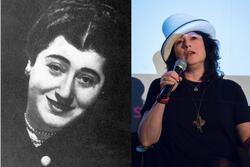Who Gets To Choose
In 2007, with long chestnut pigtails sprouting from the sides of my head, I attended my first day of kindergarten at a public school just outside of Boston. I was enrolled in what was called the Choice Program, an institution that four years later would implode with scandal. Don’t expect a story about a money-guzzling, corrupt superintendent — this is sadly just another instance of a community damaged by an age-old racist system that has always plagued the United States’ education system.
Designed to provide local families with the choice to give their children a more progressive education at no greater cost, this program operated as a subdivision of a regular neighborhood school. Under one roof, I, along with about 500 other “neighborhood kids” and “choice kids” slowly learned to sound out big words, indulged in the dramas of who would get to be the line leader tomorrow, and counted out the addition and subtraction of hypothetical peas and carrots on our fingers.
But something didn’t add up.
When my parents found out that both my brother and I had been selected through a lottery process to attend the Choice Program, the whole situation seemed quite ideal. Just a few minutes away from where we lived, we’d get a public and progressive elementary education with small class sizes, project-based learning, and extra parent involvement inside the classrooms. It was idyllic to me, too; I’d just made a new best friend who sat next to me in class, and my teachers rewarded me with pretty pencils if I was quiet in the hallways. I didn’t realize it at the time, but these were the very hallways that were keeping alive the US’s unforgivable systems of segregation and white privilege.
While designed to provide local families with the choice to give their kids a progressive education, almost all elements of choice disappear when the program’s seemingly equitable lottery admissions policy is looked at through a magnifying glass. In order to be entered into the lottery, a family must know the program exists in the first place. In order to know it exists, a family must have already assumed they had options, and done further research to explore different possibilities for their child's education. In order to assume they have options, a family must already have the resources to make choices beyond what’s convenient or necessary.
I happen to be from one of those families. Both of my parents attended university at well-known schools and knew that they wanted to make education a priority for my brother and I; and, they had the means to save up for it. My parents purchased our home long before our city was touched by gentrification, so housing wasn’t a financial burden for us. My mother was a stay-at-home-mom, and had the time on her hands to research potential schooling options for us, and to partake in programs that would require parent involvement.
These types of privileges were so common among students entering the Choice Program lottery, that they could be labeled as the program’s unofficial admission criteria. With a lottery pool already so exclusive, it didn’t matter how fair the selection process was, the school building ended up housing Choice Program classrooms filled with plush beanbags, loads of books, and financially privileged, mostly white kids. Just down the hallway were the “neighborhood” classrooms, noticeably void of so many of the resources and luxuries that I had in my classroom, and packed with kids just as deserving of pretty pencil prizes and fun field trips to the zoo as I was.
The visual differences between the classrooms didn’t stop at the beanbags. It was clear that there was a racial divide as well. The vast majority of students in my program were white, and the majority of students in the neighborhood classes were students of color.
In 2010, the community finally confronted the twisted and unfair system that the Choice Program had promoted. Although it was created with the intention of improving the city’s public education, the program ended up taking resources away from the most underserved kids, and giving them to the students who already had a leg up. Additionally, this supposedly “enhanced” education program ended up teaching segregation as the norm. Ultimately, the program was shut down.
The epilogue to this story doesn’t get any better. After the closing of the Choice Program, my parents were able to muster up the funds to send me to private school. My best friend moved to another city where the public education was better, and another friend of ours began homeschooling. Again, these are options that only come with privilege. Those without the same means as our families were left behind in a school that, although no longer so blatantly segregated, made no effort to improve the quality of its education.
This school does not stand alone. The future of a country lies in the upbringing of its children, and today, America’s education system is left lagging sorely behind. There are still hundreds of segregated schools around the country that enforce racist systems, and favor already privileged children. In order to end this cycle, all families, including those in privileged positions, must look around them and notice these inequalities, and must call out racism and advocate for change. As long as racist systems within the education system remain unchecked, American education will continue to fail all of its students.
This piece was written as part of JWA’s Rising Voices Fellowship.








Awesome!